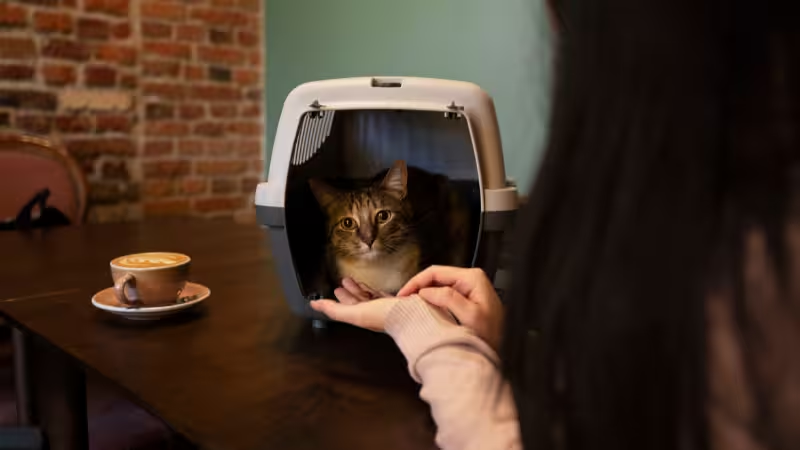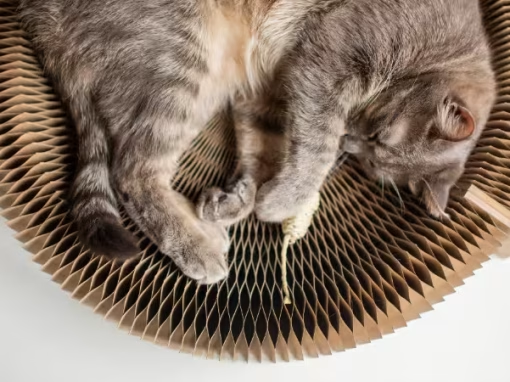Crate training your cat is one of the most valuable life skills you can teach your feline companion. Whether for travel, vet visits, or creating a calm space at home, proper crate training builds trust and helps your cat feel safe and secure. Unlike dogs, cats aren’t naturally drawn to confined spaces with closed doors, so the process must be approached with patience, understanding, and positive reinforcement.
Table of Contents
Understanding the Importance of Crate Training
Crate training is about more than just preparing your cat for the next vet appointment. It’s a way to teach them that the crate is a safe, familiar environment. When introduced correctly, the crate becomes a retreat rather than a trap. Cats who are comfortable with confinement are less likely to panic when transported, boarded, or introduced to new environments.
A crate-trained cat is easier to handle in emergencies, more relaxed during car rides, and better equipped for airline travel. This training also helps with behaviour management, as the crate can serve as a quiet space for rest and recovery when needed.
Choosing the Right Crate
Size and Design
Before beginning crate training, ensure you have the right crate. It should be large enough for your cat to stand, turn, and lie down comfortably. Hard plastic crates are often best for travel because they provide durability and stability, while soft-sided carriers work well for short trips or home use.
Comfort and Familiarity
The interior should feel like a sanctuary. Place a soft blanket or towel that carries your cat’s scent inside the crate. Familiar smells promote comfort and help your cat associate the crate with safety.
Step One: Introducing the Crate
Placement and Visibility
Begin by placing the crate in an area your cat already enjoys spending time in, such as a quiet corner of the living room or bedroom. Keep the door open or remove it entirely to allow free access. Avoid forcing your cat into the crate — instead, allow curiosity to take over.
Creating Positive Associations
Encourage exploration by adding a few treats, favourite toys, or a sprinkle of catnip inside. Let your cat enter and exit freely, rewarding every voluntary interaction. This builds a positive connection between your cat and the crate, transforming it into a familiar and non-threatening space.
Step Two: Encouraging Regular Use
Feeding Inside the Crate
Once your cat begins to approach or enter the crate willingly, start feeding their meals inside. Begin by placing the food just at the entrance, and then move it further inside over time. This step helps your cat associate the crate with something rewarding and comforting.
Extending Time in the Crate
Gradually encourage your cat to stay inside the crate longer. When they are comfortable eating inside, quietly close the door for a few seconds, then open it before they show signs of stress. Slowly increase the time with each session until your cat can remain inside for several minutes while calm.
Step Three: Building Comfort with Confinement
Short Training Sessions
Keep your training sessions short but consistent. Aim for multiple short sessions each day rather than one long one. Speak in calm, reassuring tones, and never use the crate as punishment.
Expanding the Experience
Once your cat is relaxed inside with the door closed, start moving around the crate, gently lifting or carrying it for a few seconds. Gradually introduce short car rides or simulate travel experiences to reduce fear of motion or unfamiliar surroundings.
Step Four: Preparing for Travel or Vet Visits
Reinforcing Calm Behaviour
Before a vet visit or trip, allow your cat to enter the crate on their own. Offer treats and praise for calm behaviour. Covering the crate with a light blanket can reduce visual stress during transport.
Managing Anxiety
If your cat shows signs of anxiety, avoid rushing the process. Return to earlier steps and reinforce positive interactions. Each cat progresses at a different pace, and patience is essential for lasting success.
Common Challenges and How to Overcome Them
Refusal to Enter the Crate
If your cat avoids the crate completely, change its location or replace the bedding. Sometimes a small adjustment, such as moving it near a window or adding a new toy, can reignite curiosity.
Meowing or Scratching Inside the Crate
Some cats vocalise or scratch when confined. Ignore the behaviour rather than releasing them immediately, as letting them out reinforces the idea that meowing leads to freedom. Wait for calm behaviour, then open the door and reward them with affection or treats.
Fear After a Negative Experience
If your cat associates the crate with stressful experiences, like vet visits, rebuild trust slowly. Leave the crate out at all times and make it part of daily life again. Consistency will help your cat learn that the crate can be a calm, positive environment.
Long-Term Maintenance and Reinforcement
Keeping the Crate Accessible
Leave the crate open and accessible even when you’re not actively using it. Cats are more likely to enter voluntarily if it remains part of their environment.
Continuing Positive Reinforcement
Regularly toss treats, toys, or a small handful of kibble into the crate to keep it associated with good things. You can also line it with your cat’s favourite blanket to encourage them to nap inside.
Using the Crate for Recovery
A crate can also serve as a quiet recovery zone after surgery or injury. Because your cat already views the crate as a safe space, confinement for medical reasons becomes far less stressful.
Helping Nervous or Rescue Cats
Cats with anxious or fearful dispositions, especially rescues, may need extra time. These cats often benefit from a “slow and steady” approach using counter-conditioning — rewarding calm behaviour near the crate while gradually moving closer. Use pheromone sprays or diffusers to create a relaxed atmosphere and keep training sessions brief but positive.
Over time, even the most timid cats can learn that the crate is not a source of fear but a space of safety and rest.
Benefits of Crate Training Beyond Travel
Crate training provides more than convenience. It supports behavioural balance by giving cats a private, quiet retreat — especially important in multi-cat homes or noisy environments. It also reduces the likelihood of injury or escape during stressful events, such as fireworks or house moves.
By incorporating crate time into daily routines, you create a foundation of trust that makes your cat feel safe no matter where they are.
Final Thoughts
Crate training your cat requires consistency, patience, and compassion. Every small success builds your cat’s confidence and strengthens your bond. When approached positively, the crate becomes not just a travel necessity but a trusted sanctuary. With time and encouragement, your cat will see it as their own safe haven — a space of comfort, calm, and familiarity.



